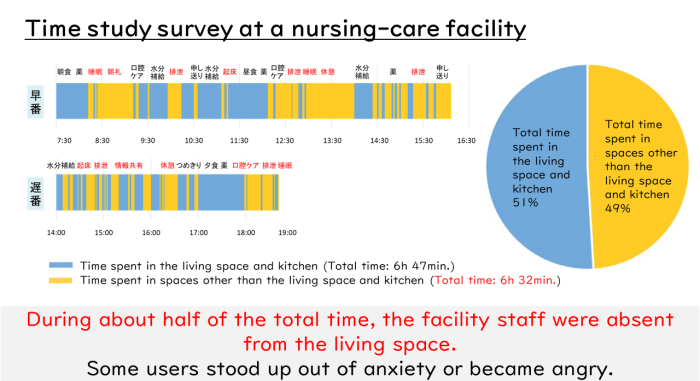The child-like watch-over nursing-care robot “HANAMOFLOR,” which is being developed at the Technology Infrastructure Center of the Sony Group, will go on display in a new permanent exhibition of the National Museum of Emerging Science and Innovation that is scheduled to be opened to the public on November 22, 2023. This is the first time that HANAMOFLOR has ever been on permanent display for the public. Four permanent exhibitions will be opened on the themes of “robotics,” “global environment,” and “aging.” HANAMOFLOR will be exhibited in the “Park of Aging” and presented as a future technology that supports aging people.
About the nursing robot “HANAMOFLOR”
Overview
HANAMOFLOR is an autonomous mobile robot developed to support users of a nursing-care facility where a single staff member looks after multiple users, especially in a living space and other places that tend to be shorthanded. Being 83 cm tall and weighing approximately 20 kg, the robot has a body shape and voice similar to those of a child (or grandchild) to make it look familiar. HANAMOFLOR can perform one-on-one recreational activities, such as singing together and simple physical exercises and conversations, according to preprogrammed instructions. It also has such features as body temperature measurement and the handling of phone calls from family members.

How it came to be developed
The Sony Group is engaged in R&D efforts to create robots that support social and human activities while coexisting in harmony with people. In addition to the research on advanced robotics technology, we are also exploring ways to identify customer needs for the practical use of robots.
Amid these efforts, our attention was drawn to the field of nursing care experiencing serious labor shortages. And we started to develop a robot that would truly help to assist daily nursing-care activities and to improve the QOL (Quality of Life) of nursing-care service users.
Survey of the needs of a nursing-care facility

At the facility, a single staff member needs not only to look after multiple users but to perform back-office tasks as well, making it unpractical to stay around all users all the time. The survey shows that, during about half of the time of the day, the facility staff have to be absent from the communal living space where users spend much of their time.

Staff of a nursing-care facility can take good care of individual users only when there is a space where the users spend time with peace in mind under the watch of staff members. The absence of staff taking care of users can make some of them, those with declined cognitive functioning in particular, mentally unstable, causing them to stand up and move around or become angry. We considered that a robot capable of assisting simple tasks and communicating with humans would alleviate this situation.
Core technology
Based on the survey results, the functions and technologies tailored to the needs of facility staff and users are implemented. In addition to the basic technologies required for an autonomous mobile robot, a care method called Humanitude is adopted to make the robot acceptable even to individuals with dementia (who are prone to become anxious about unfamiliar things). Specifically, HANAMOFLOR is programmed to approach the user slowly, make eye contact, exchange greetings, and then start a conversation in a step-by-step fashion. The robot has facial and utterance recognition capabilities implemented so that it waits for the response of the user before proceeding to a conversation or recreational activity.
Demonstration experiment:
In the demo, HANAMOFLOR was put in front of nursing-care facility users and engaged in conversations and recreational activities with them. Some of them interacted with the robot in a lively manner. Positive feedback was also received from the staff, who hoped that the robot would not only contribute to reducing and facilitating their workload, but would also be a new option for enjoying life at the facility.
Beginning around 2019, we surveyed the needs of nursing-care facility users and operators with the cooperation of the special nursing home “Yomiuri Land Hana House” and started the development of the robot. Since 2021, we have conducted joint demonstration experiments in the facility on a regular basis.
Also, since 2023, we have been involved in “Moonshot R&D Project, Moonshot Goal 1 – The Realization of an Avatar-Symbiotic Society where Everyone can Perform Active Roles without Constraint,” led by Professor Hiroshi Ishiguro, a robot scientist.
Going forward, we will double down on technology development and customer need identification by attracting interest from more nursing-care facility users and staff so as to deliver this technology to society as soon as possible.
Related information
・Information on new permanent exhibitions on the National Museum of Emerging Science and Innovation website
https://www.miraikan.jst.go.jp/en/news/general/202311013222.html



